Gurez Valley Tour Experience: Kashmir’s Unexplored Gem near the indo-pak border
“Uncover a hidden slice of paradise, perhaps the most beautiful of all in Kashmir”
If Kashmir is the paradisiacal crown of India, then Gurez Valley is the most precious jewel in that crown. Forbidden for many years owing to its proximity to the Line of Control, the remote valley has now opened up to emerge as one of the most safe and peaceful places in the entire Kashmir valley. For many, this untouched region is perhaps the most beautiful of all in Kashmir.
Inhabited by the forgotten Dard-Shin people who have a distinct cultural identity, similar to their kinsmen in Gilgit-Baltistan, the valleys of Gurez, Tulail, Bagtore and Izmarg are dotted with ancient villages set amidst breathtaking landscapes. This curated trip explores the unseen beauty of Gurez and offers handpicked local experiences in this magical place. An offbeat experience of a lifetime, think of this Gurez Valley tour as a journey to an enchanting fairyland, cozily hidden among the high mountains.
- Duration: 5 days
- Region: Gurez-Kishanganga Valley, North Kashmir
- Time: April - November
- Type: Guided Road Trip
- Accommodation: Hotel / Homestay
- Pickup/Drop-off: Srinagar Airport/Hotel
EXPERIENCE ITINERARY
Day 1: Srinagar – Gurez via Razdan Pass (6-7 hours) | Overnight Dawar Hotel/Homestay
- Morning Pick up from Srinagar Airport or Hotel
- Travel towards North Kashmir passing by the Wular Lake: the Largest freshwater lake in India and second-largest in Asia
- Cross the stunning Razdan Pass (11672 feet) on the way – enjoy views of Mount Harmukh on clear days
- Reach Dawar in Gurez and check in to Hotel/Homestay
Day 2: Gurez Valley Exploration | Overnight Dawar Hotel/Homestay
- Take a short road trip to some of the lesser known gems of the valley – Bagtore & Izmarg
- Walk around the pretty village of Dawar and explore its lush meadows and picturesque envrions
- Explore the Kishanganga riverside and marvel at the grand Habba Khatoon peak
- Meet the locals at a traditional village nearby and hike to an underground spring
- Visit Khandiyal Top to get panoramic views of the breathtaking landscape
Day 3: Tulail Valley Exploration | Overnight Dawar Hotel/Homestay
- Today we explore the valley of Tulail driving beyond the Gurez valley closer to the LoC
- Discover an isolated wonderland-a unique blend between the barrenness of Ladakh and greenery of Kashmir
- Experience the ancient and distinctive culture of the region
- Visit the pretty villages of Sheikhpora, Badugam, Angaikot on the way
- Drive on the same route back to Hotel
Day 4: Gurez to Srinagar | Overnight Srinagar Hotel
- After Breakfast, Travel back to Srinagar via the Razdan Pass
- Enroute visit the Peer Baba Shrine and admire the beautiful surrounding landscapes
- Reach Srinagar and spend the Evening at Leisure
- Walk around the markets, spend time by the Dal or indulge in some local Shopping
Day 5: Farewell
- Drop off to Srinagar Airport
- Fly to respective Destinations
EXPerience Highlights
1. Gurez: Land of the Dard-Shins
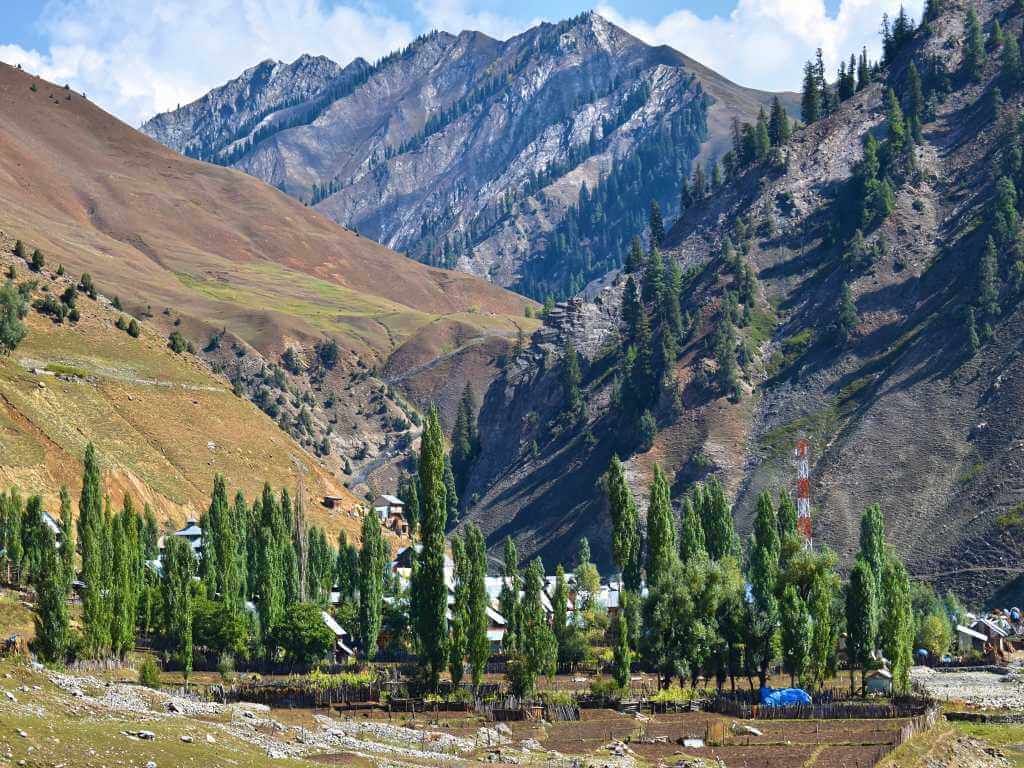

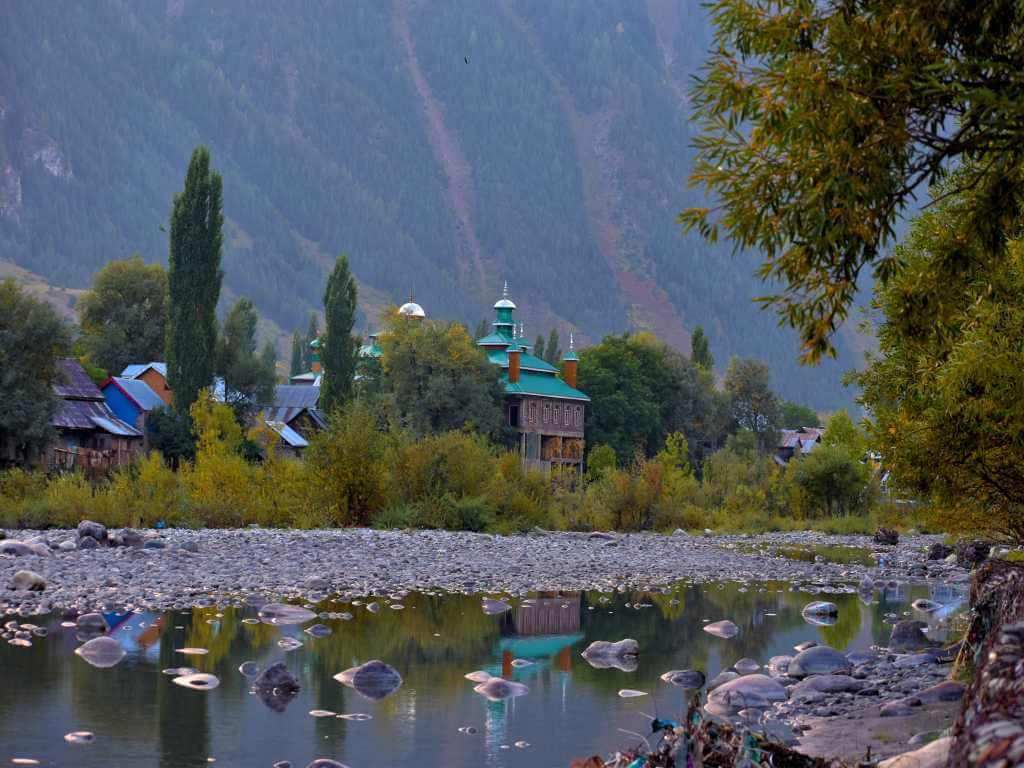
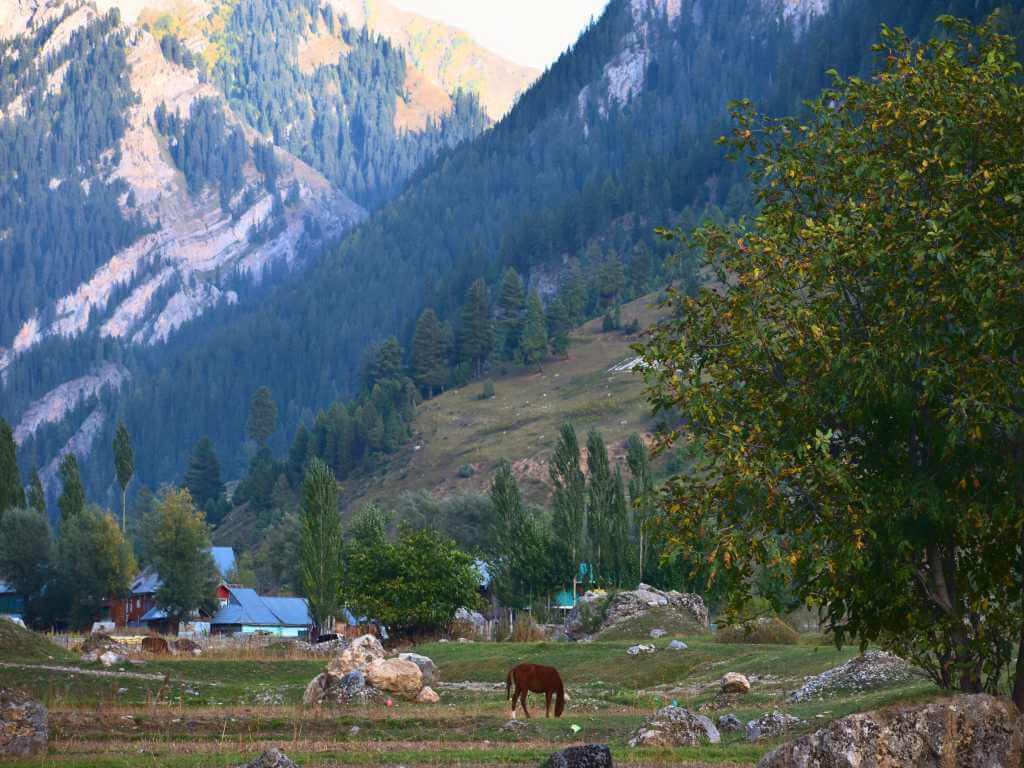


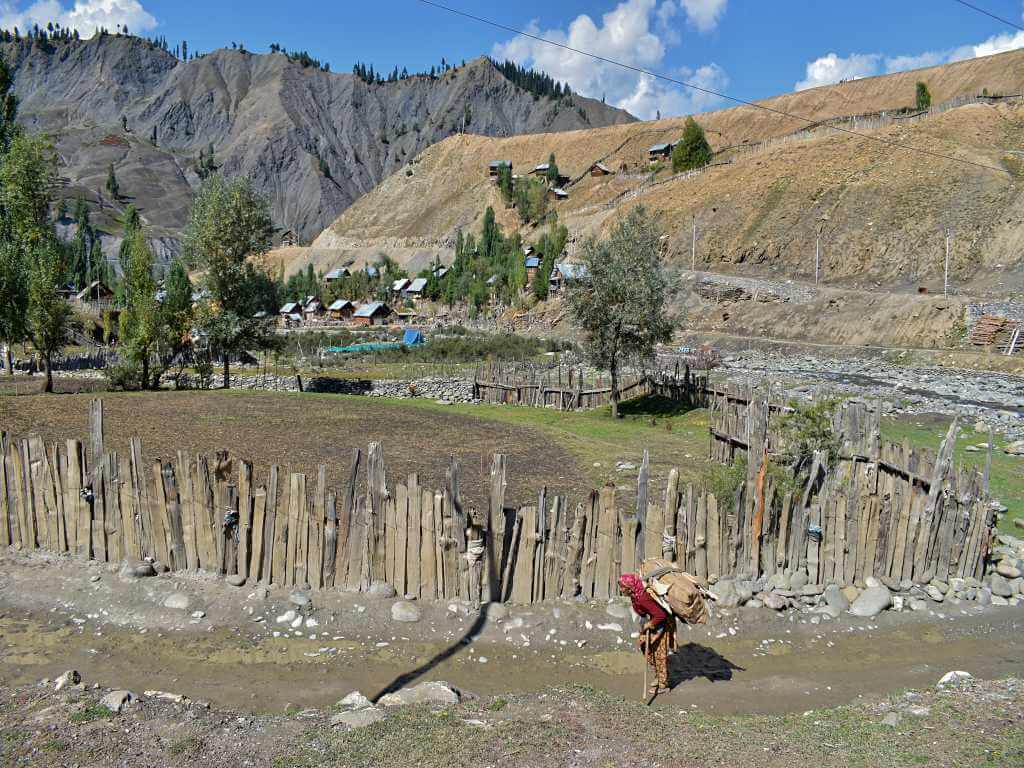
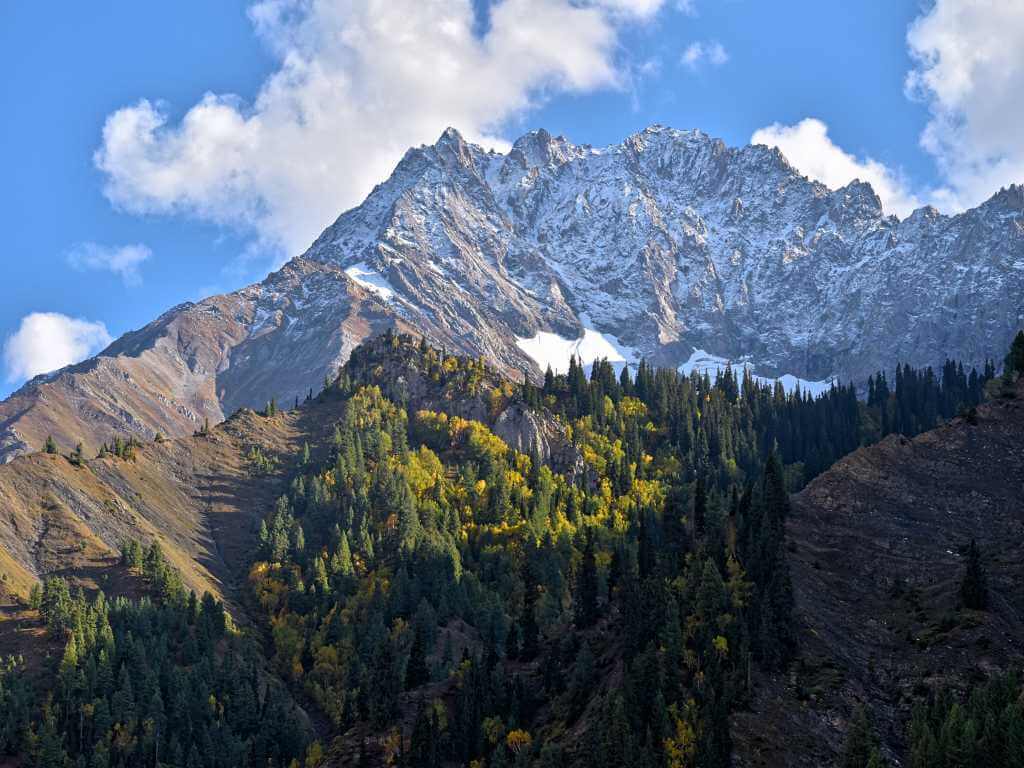

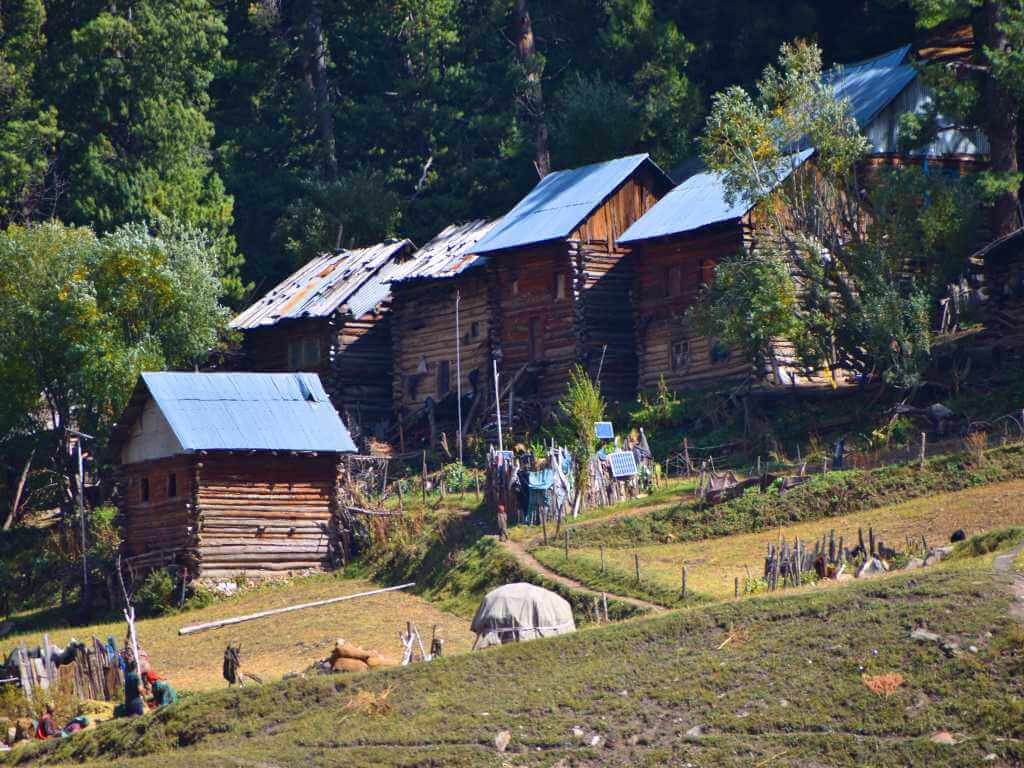
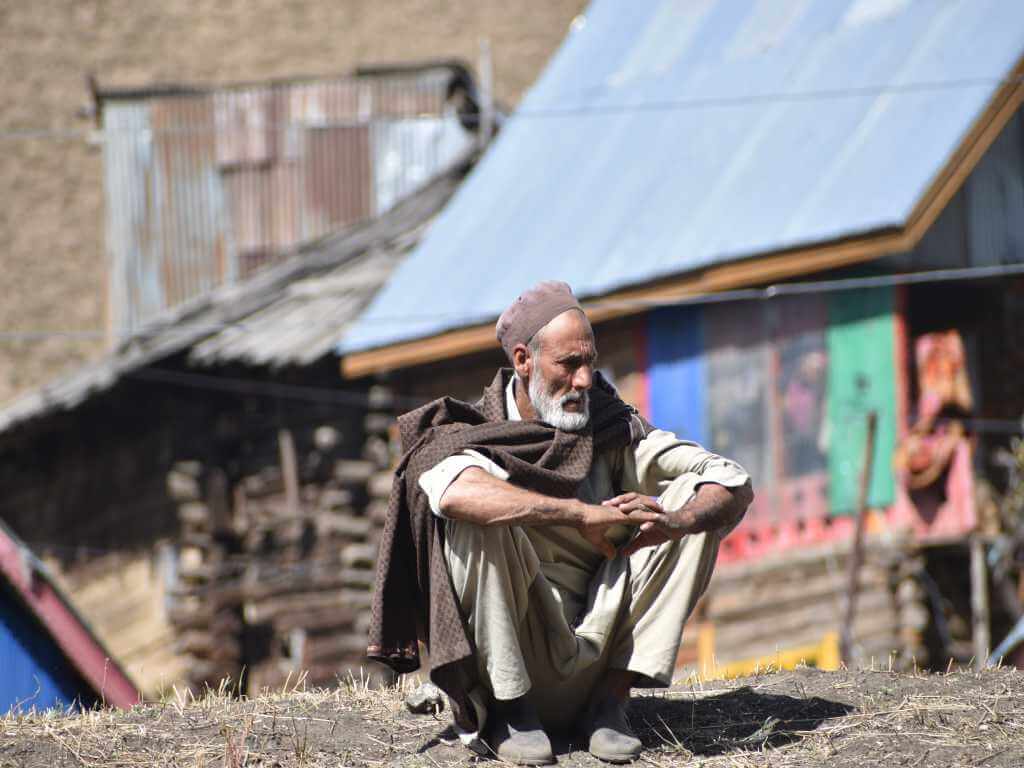
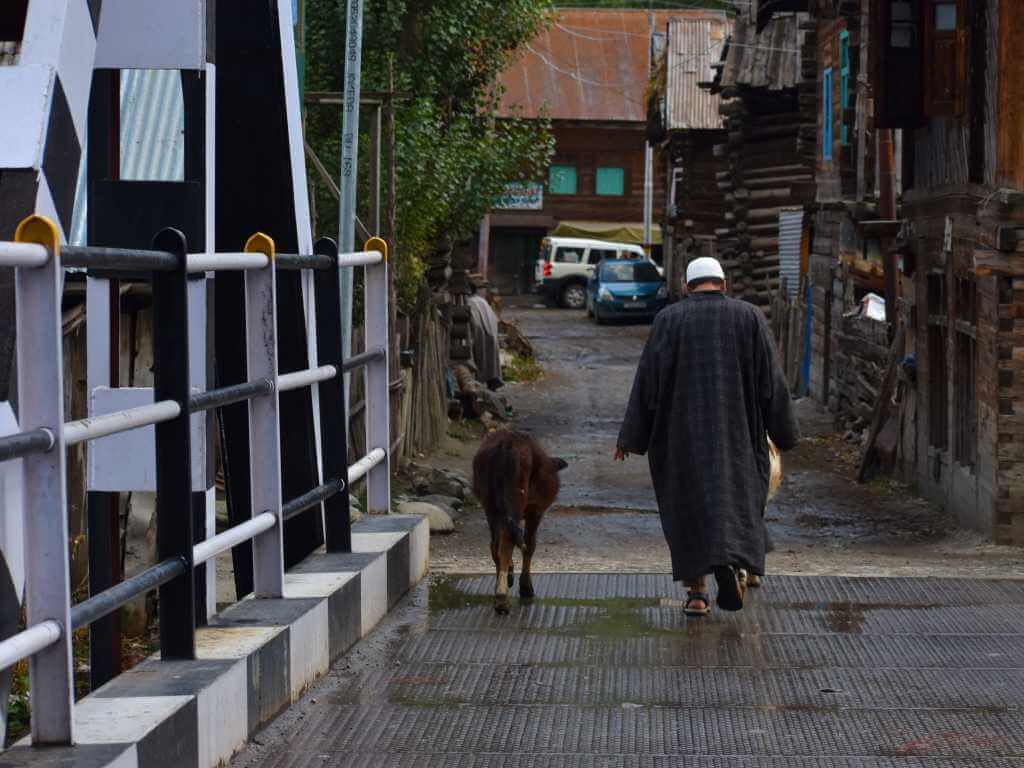
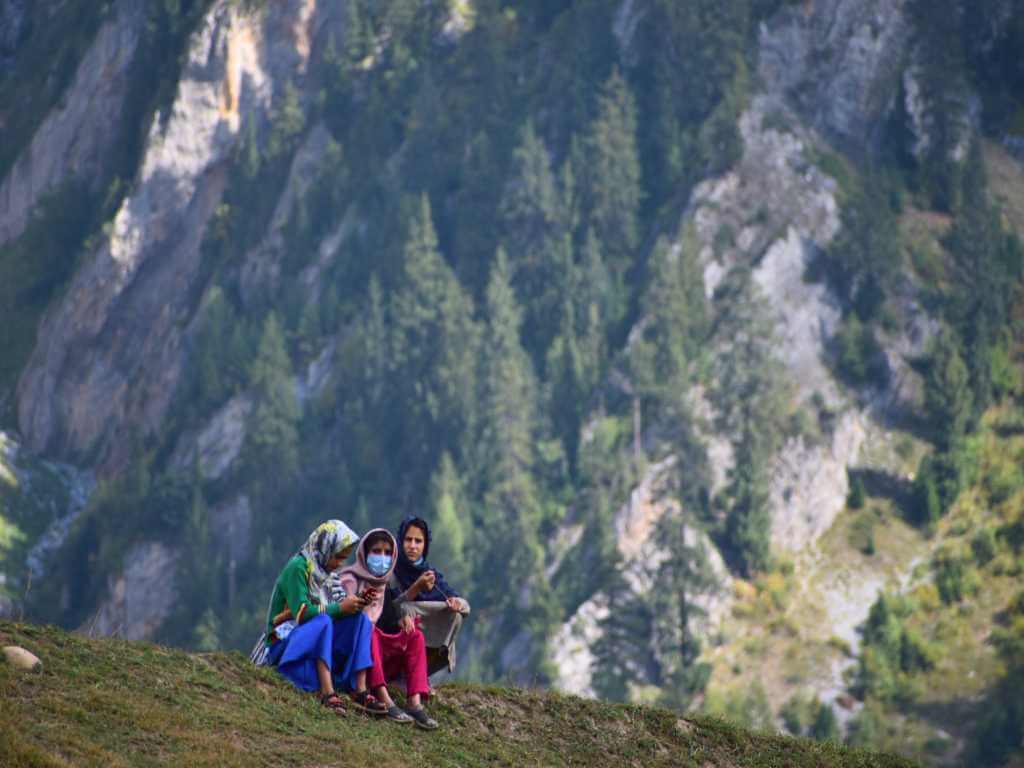
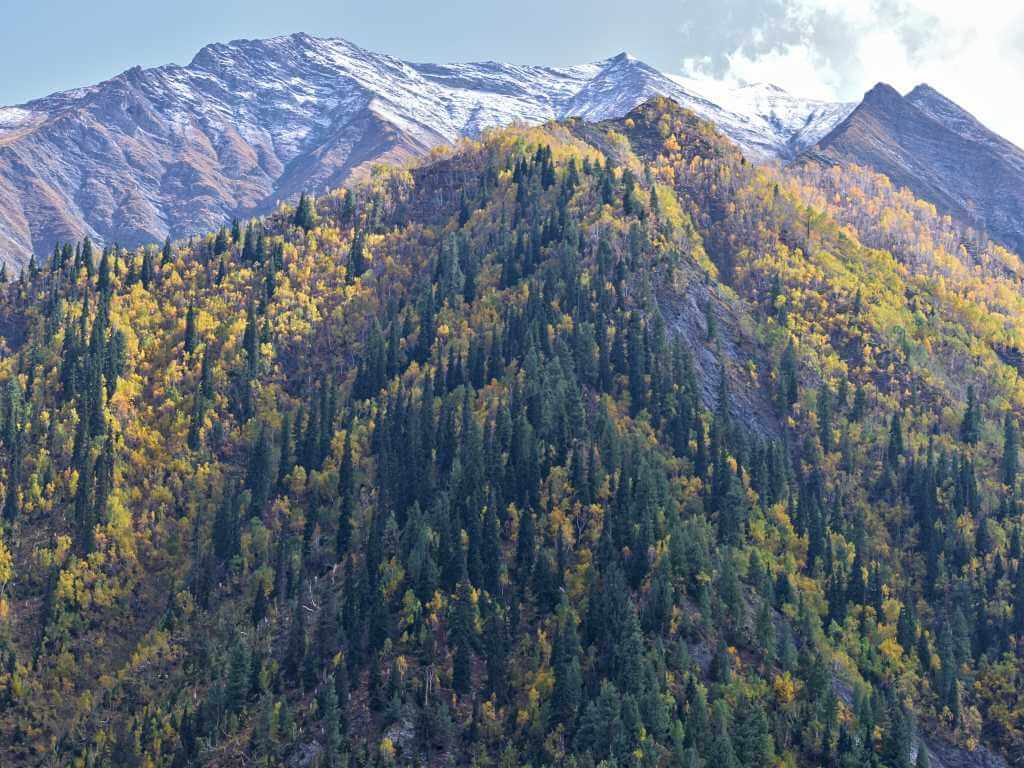


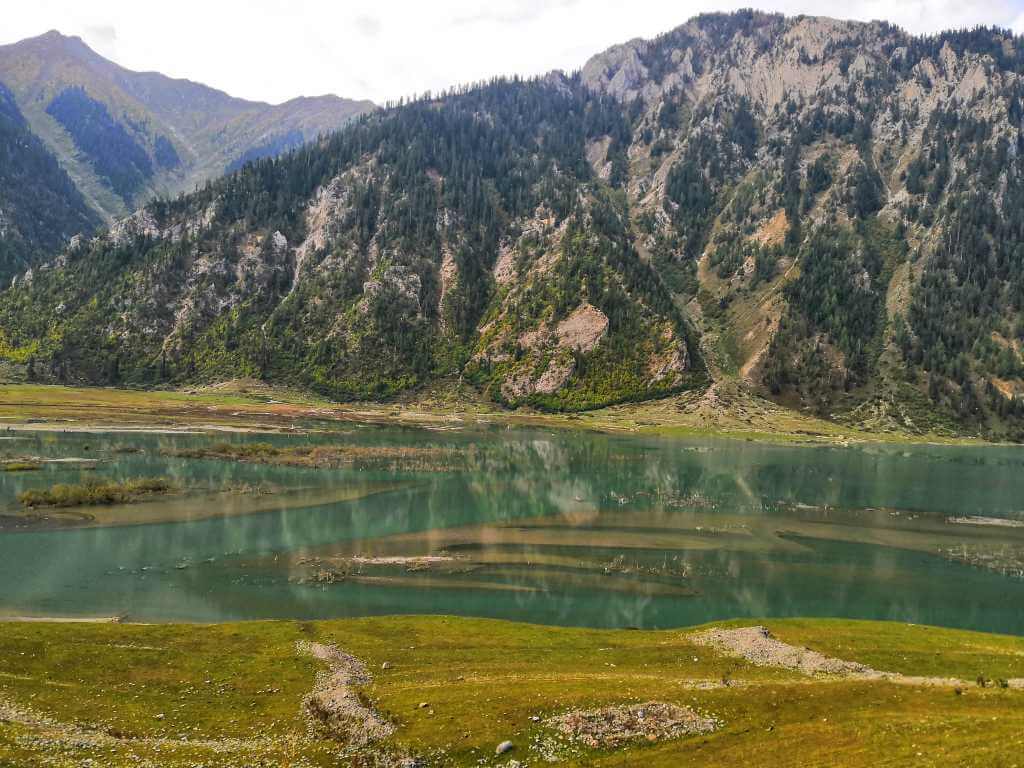
Walter Lawrence, an author and once the British Settlement Commissioner of Kashmir, who visited Gurez in 1894, had called the valley “the most beautiful of Kashmir’s Margs… with mountain scraps of indescribable grandeur”.
127 Kms from Srinagar, the valley of Gurez lies in a peaceful, remote corner in the north of Kashmir. Dotted with quaint villages along the scenic Kishanganga river, this offbeat destination is an unexplored slice of heaven. It is geographically isolated from the rest of the world and is surrounded by exceptional natural beauty.
From high mountain ranges to unspoiled forests to innumerable Pristine lakes (Patalwan Lakes Trek or the Gurez Valley Trek), this is an unmapped paradise. It is also the homeland and last sanctuary for the Dardic people in India.
Historically, Gurez was part of ancient Dardistan. It fell along the old Silk Route, which connected the Kashmir Valley with Gilgit-Baltistan before continuing further to the Kashgar region of China.
The local inhabitants are from the ethnic Dard-Shin tribe. Different from Kashmiri, they speak in Shina, a once-thriving language that is slowly vanishing.
They have their ancestral connection with the people of Gilgit-Baltistan region, now in Pakistan. Their styles of dress, traditions, customs and cultural identity is similar to their kinsmen located on the other side of LoC.
Today, the last major remnants of this unique ethnic group can be found only in Gurez, Tulail and Bagtore areas, coexisting happily and peacefully with the Indian Army stationed here.
This is one rare nook of Kashmir where the Indian Army is on very good terms with the local population, always providing much-needed assistance with medical and other emergencies, especially in the harsh winter months.
On this curated Gurez Valley Tour, we explore a secluded paradise nestled away in one of the most unexplored regions of the Kashmir valley.
The trip helps us unravel the Dardic people’s history, culture and heritage, offering us all a fascinating glimpse into the lives of an ancient mountain tribe.
2. The formidable Habba Khatoon Peak
The mountain of Habba Khatoon is the star of Gurez, standing tall and welcoming all the visitors here. It is a graceful, pyramid-shaped peak that rises high over the village of Dawar, overlooking its vast green expanse.
A visual of the lazily flowing Kishanganga against the backdrop of this towering giant is one of the most spectacular and memorable sights here.
The rocky mountain looks amazingly beautiful in the evening when the sun shines on its bare face from the opposite side. In the morning, the rising sun behind it makes the mountain even more grand, bringing a mystical touch to this awe-inspiring attraction.
Apart from its natural grandeur, the mountain is also significant particularly because of its name. Habba Khatoon in Gurez valley is named after the 16th century Kashmiri poetess and the legendary peasant-queen.
One of the greatest poets of Kashmir, she once composed poems and songs about loss and separation after the death of her husband and is now fondly remembered as the ‘Nightingale of Kashmir’.
An iconic figure in Kashmiri literary and medieval history, Habba Khatoon’s ballads are sung in the valley even today. The mountain gem of Gurez stands tall as a grand symbol of the poet’s greatness.
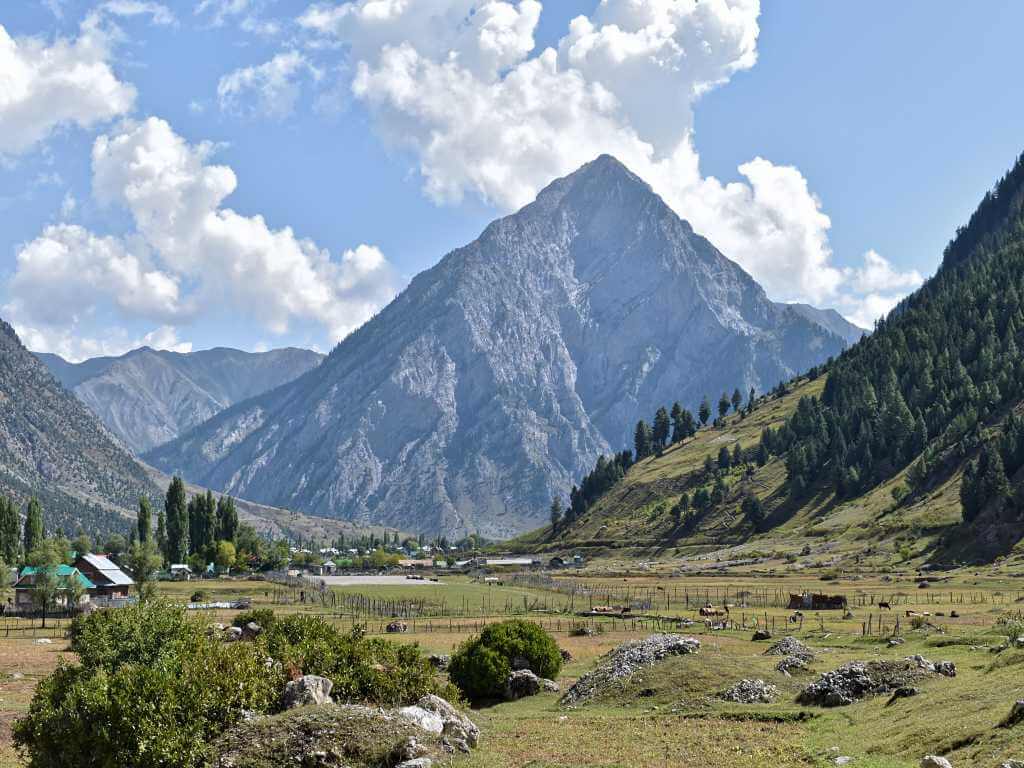
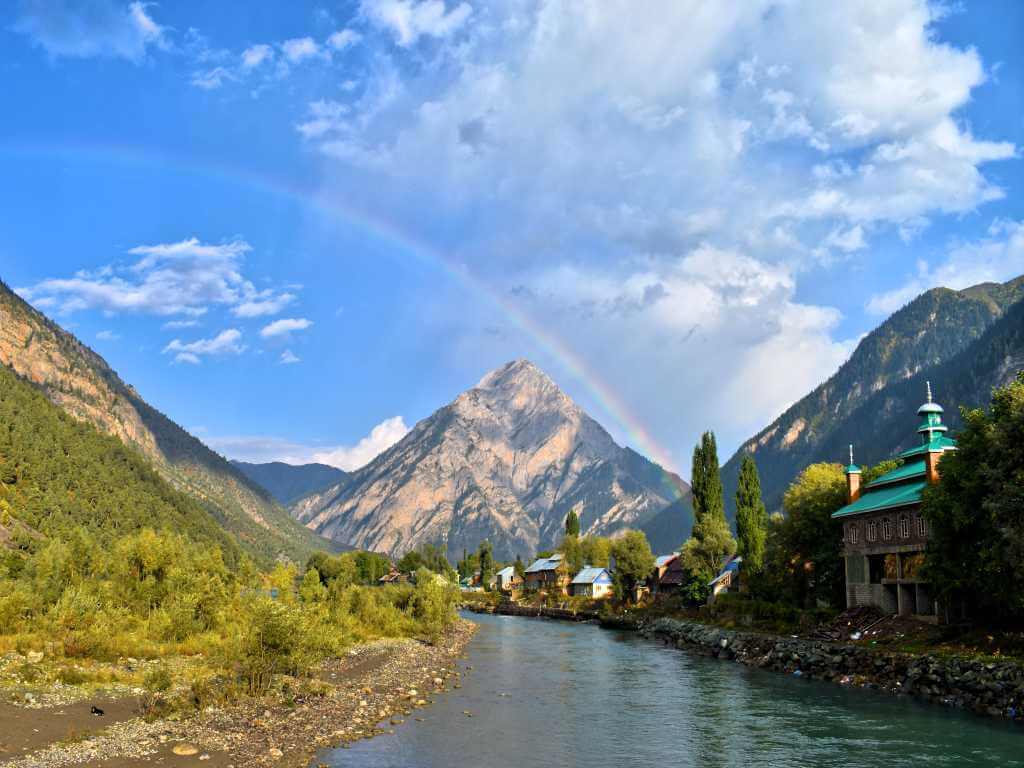
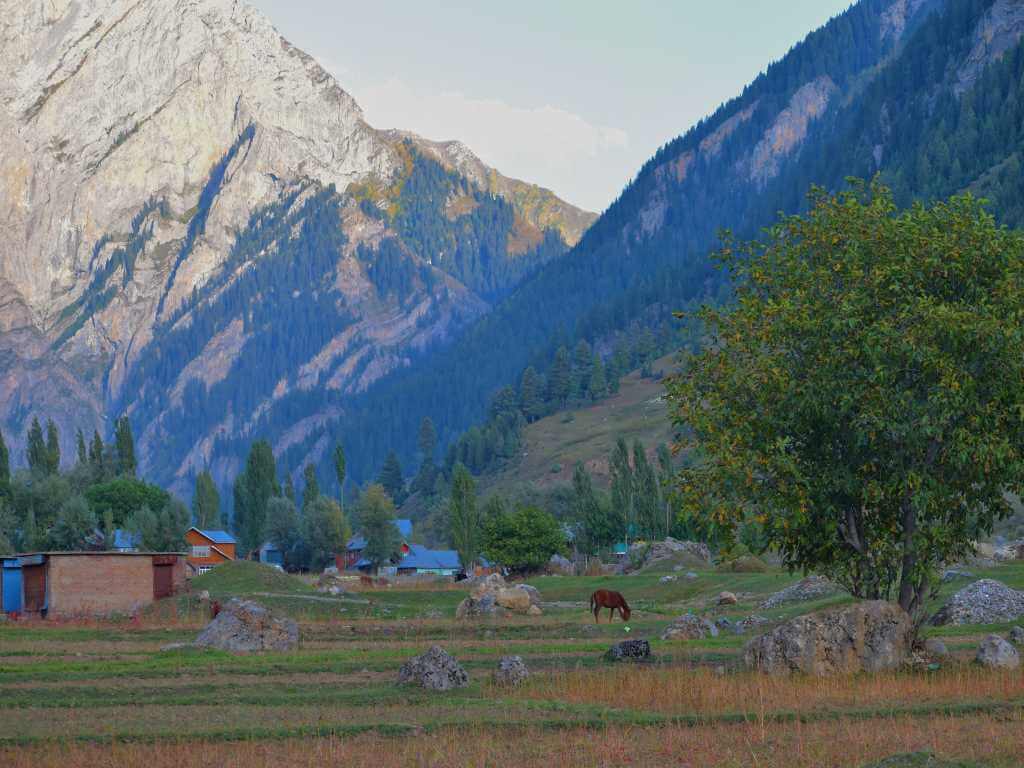
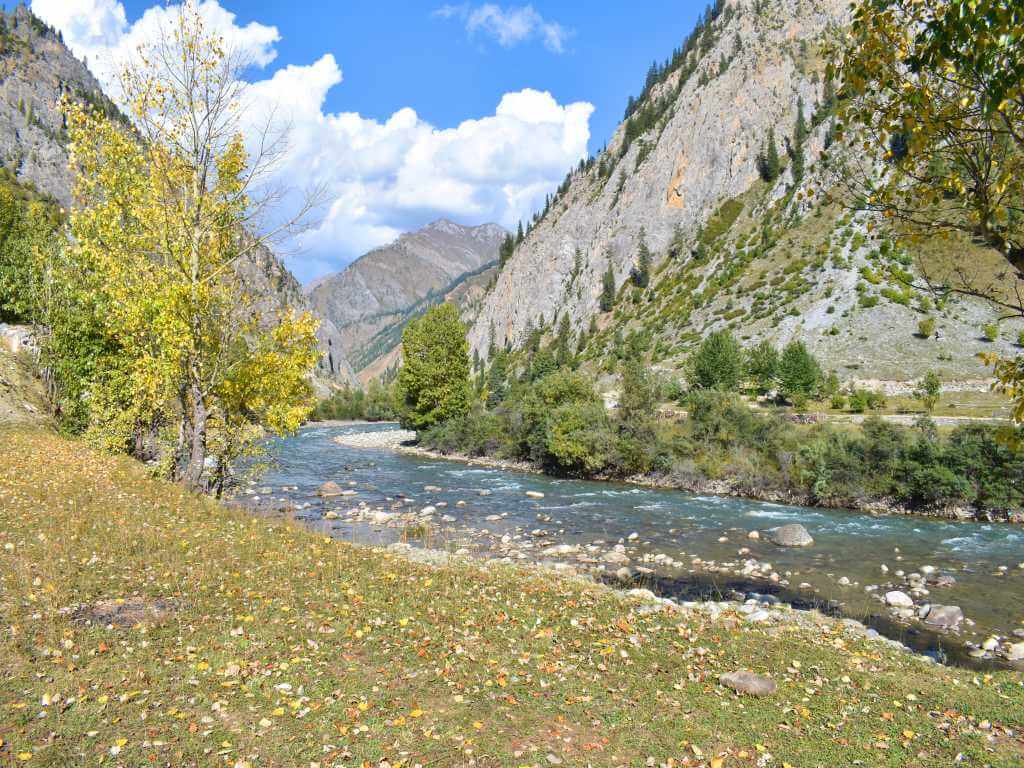
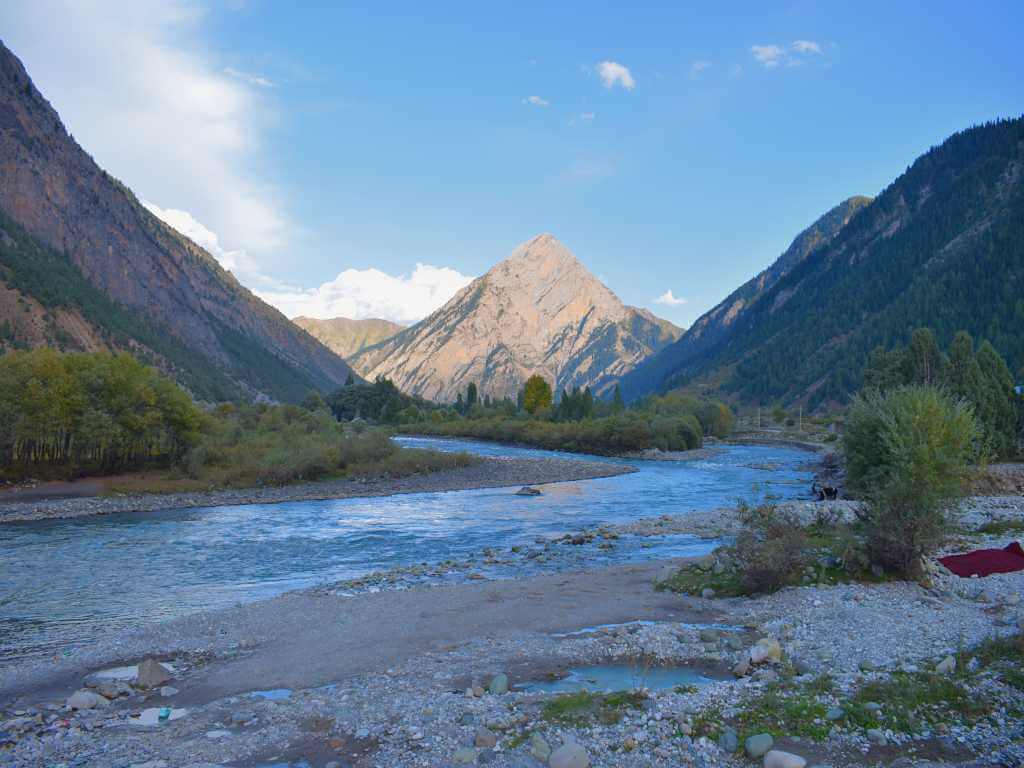
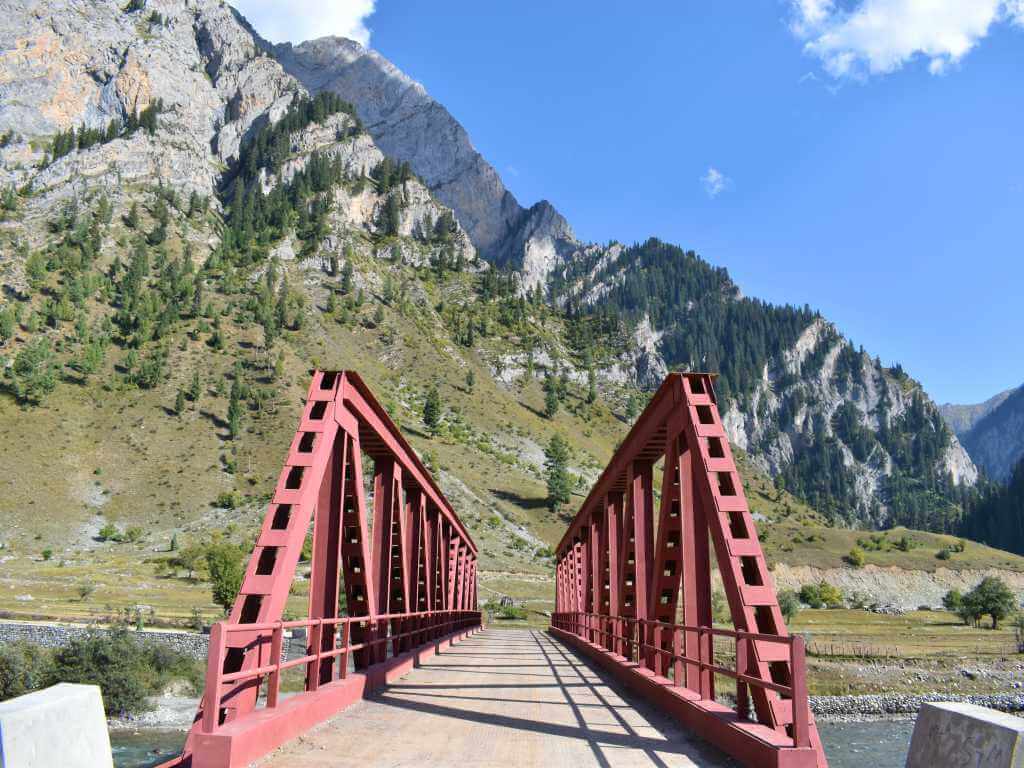

3. Hamlets of the Tulail Valley
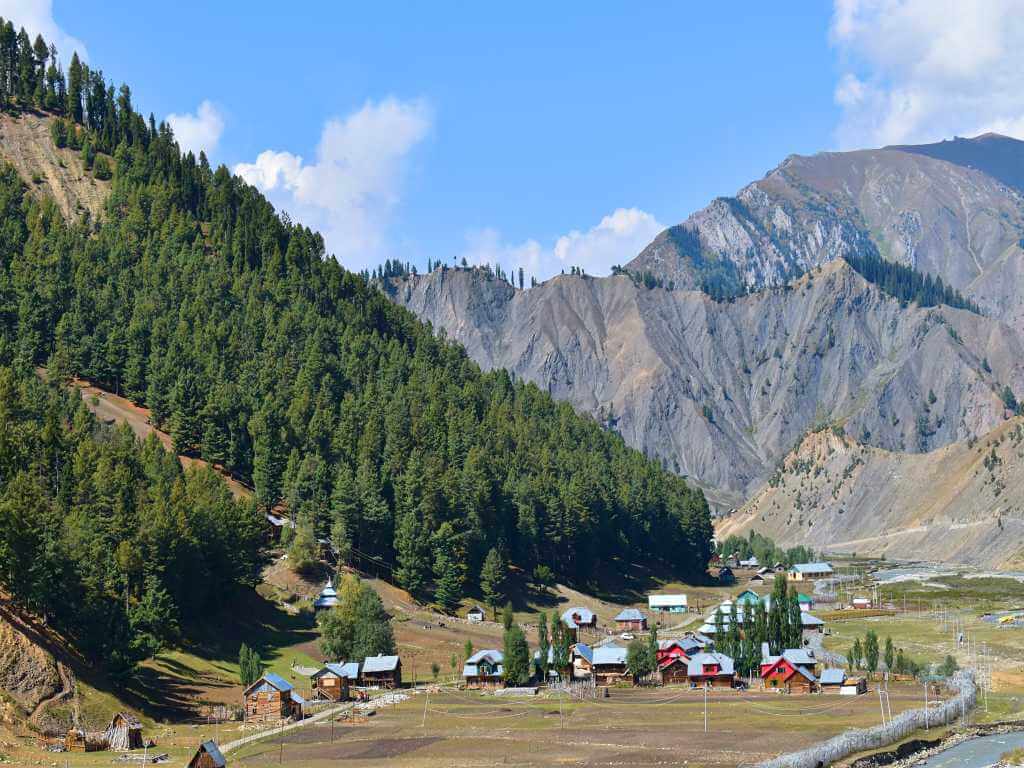
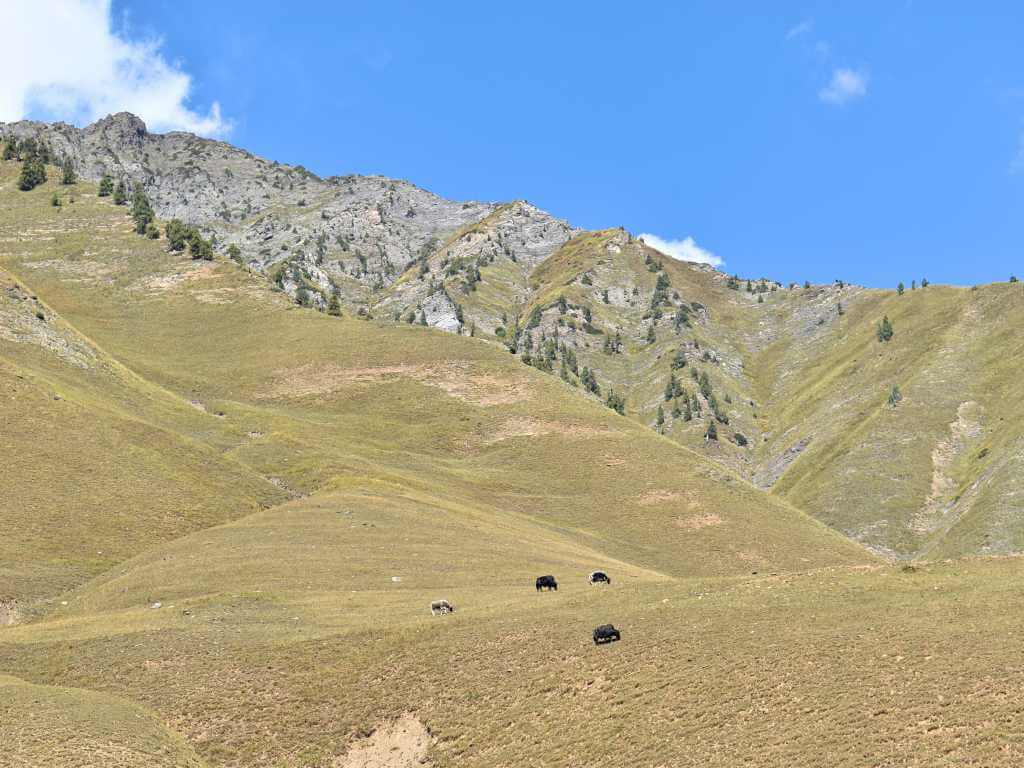
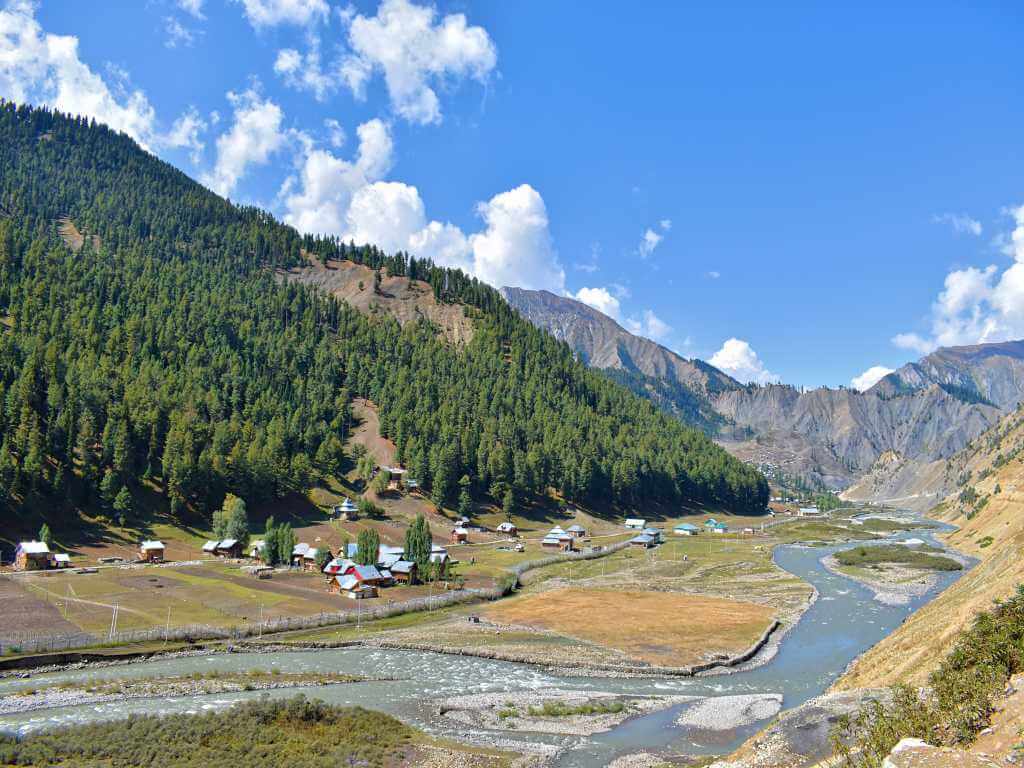
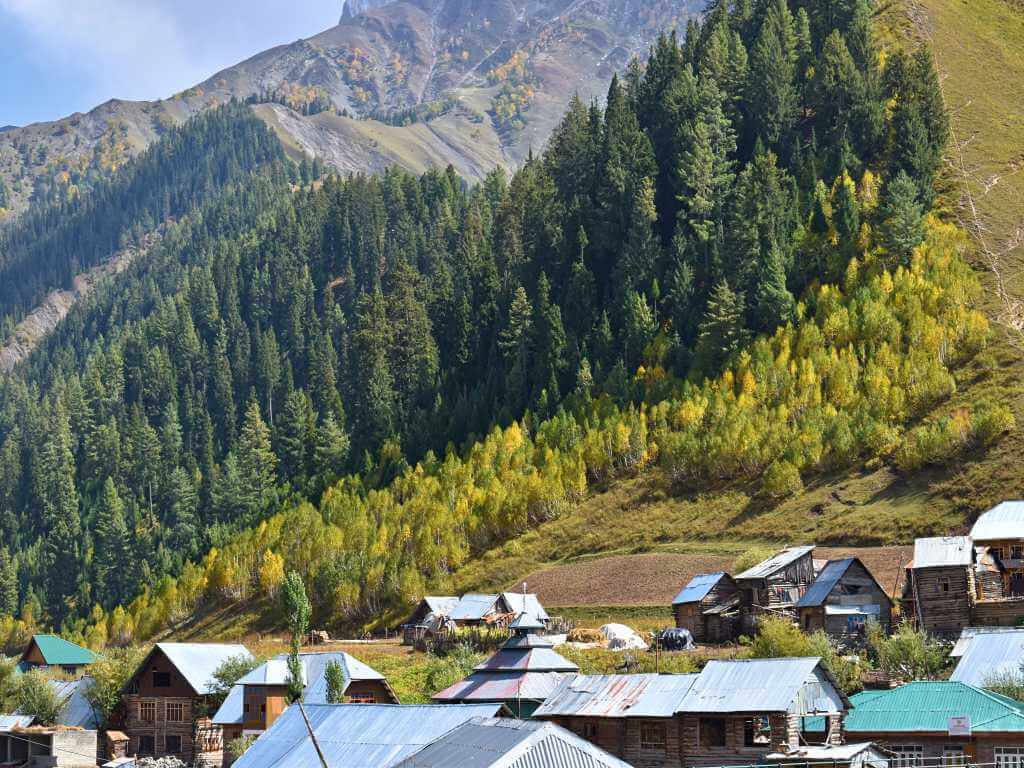

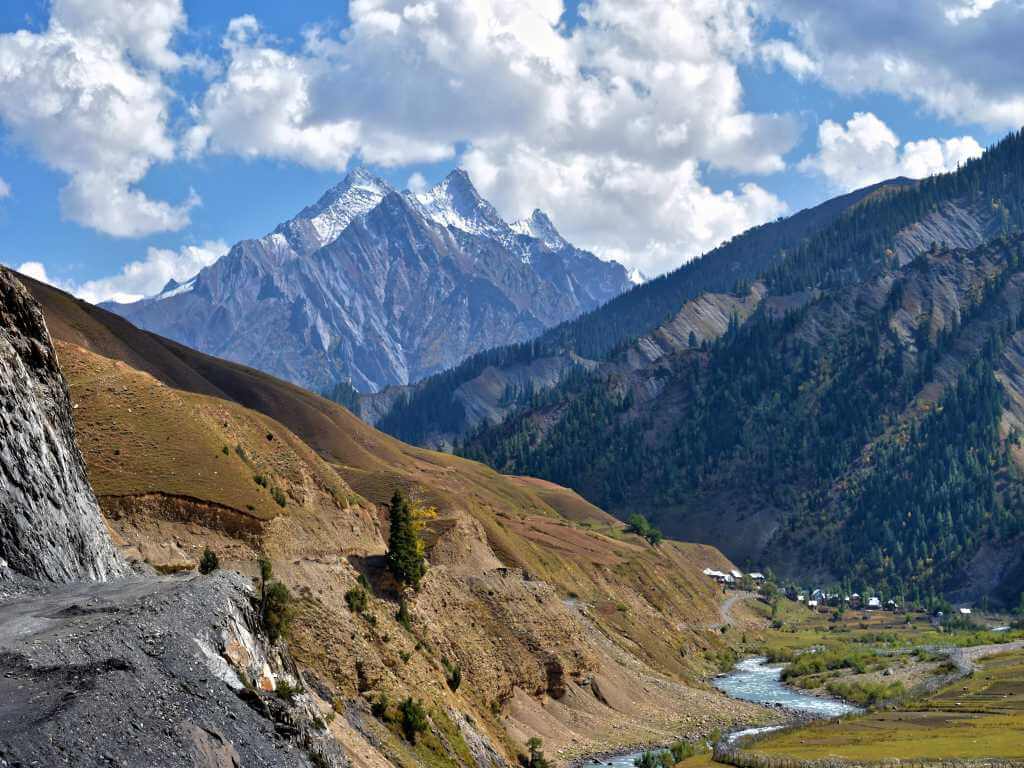
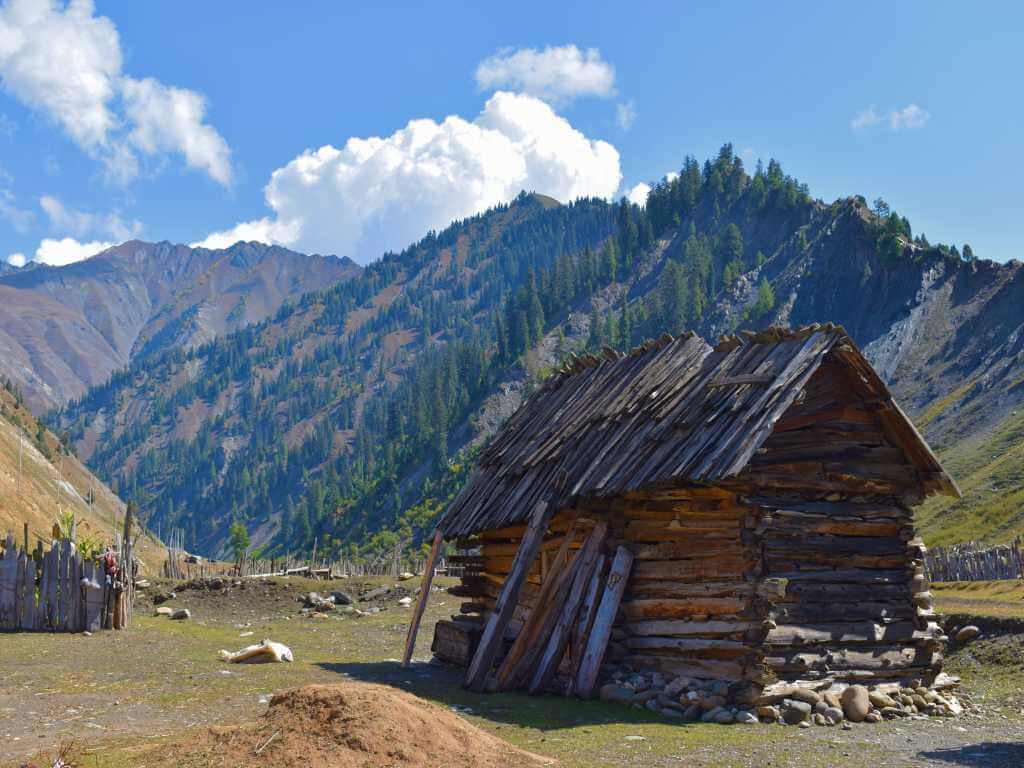
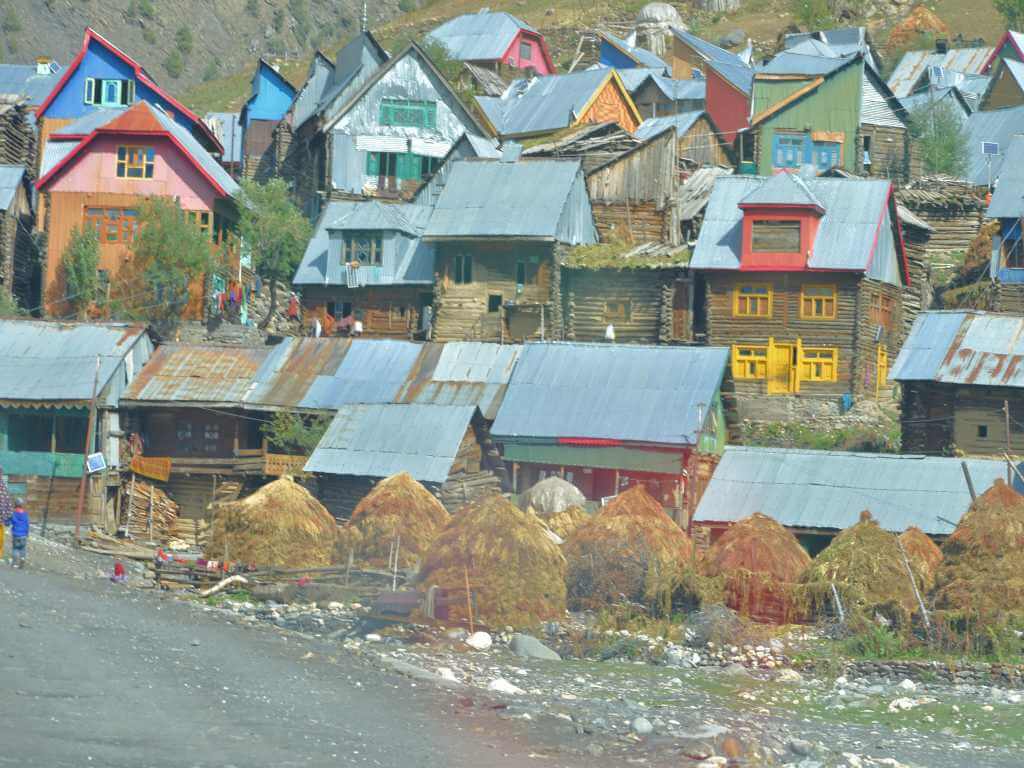
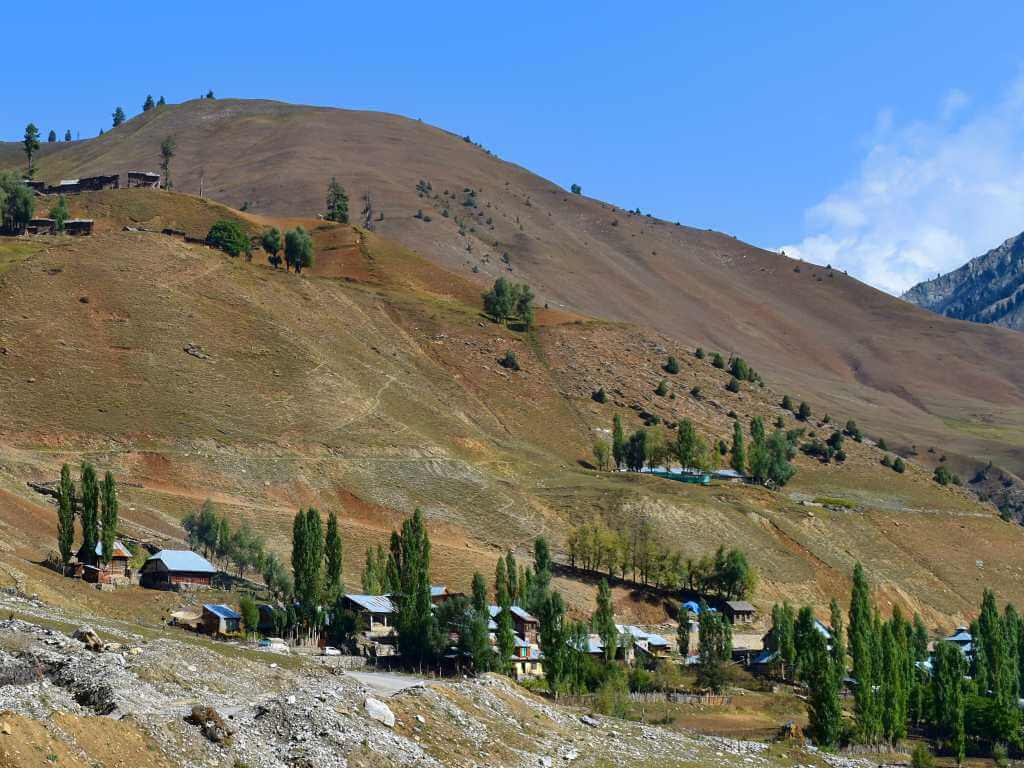
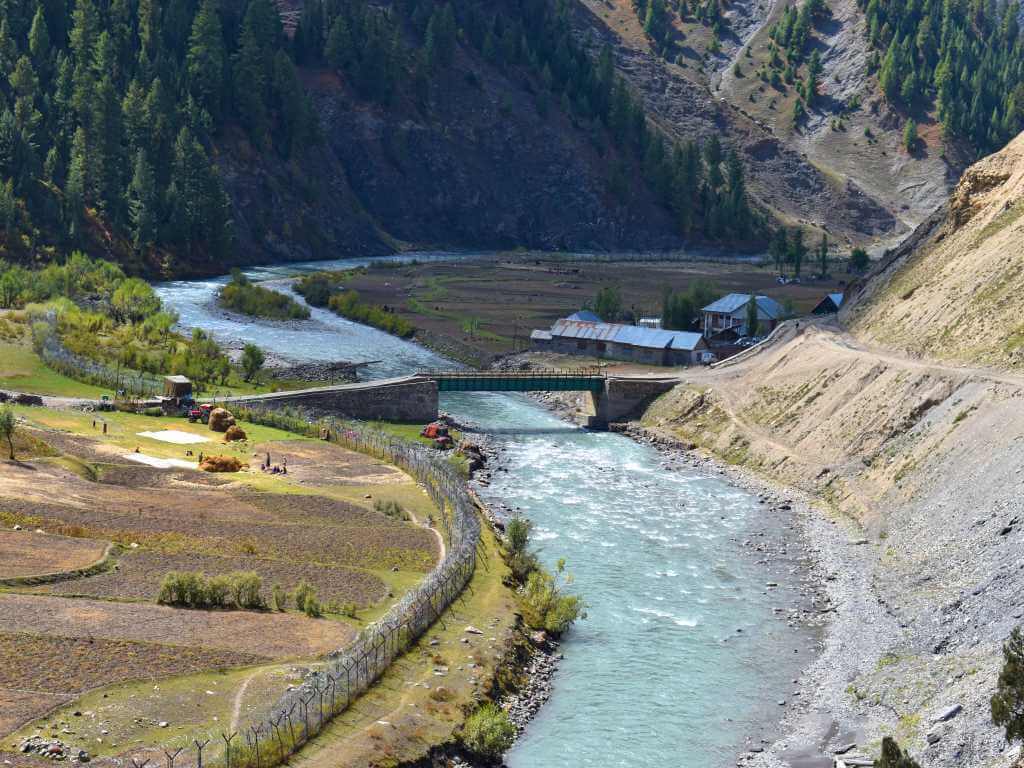
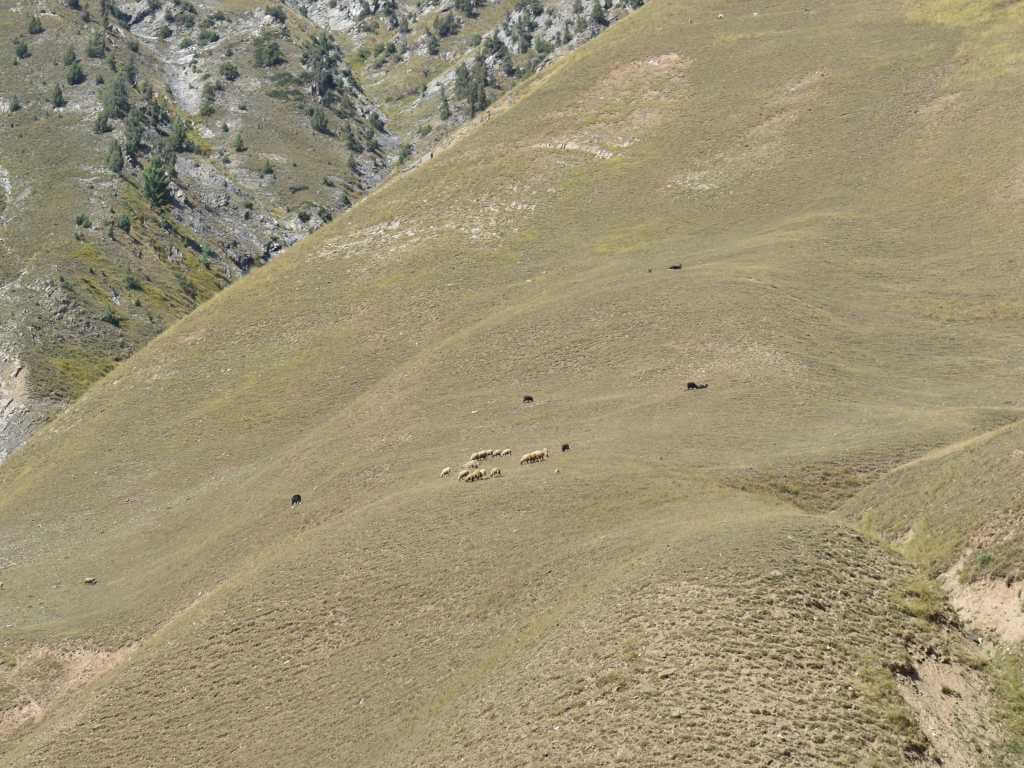
Tulail Valley is one of the remotest regions of Jammu and Kashmir located up north of the territory, beyond the Gurez valley. Parallel to the Line of Control, as we travel further up the Dawar township, we enter the Tulail area crossing multiple Army checkpoints.
This is a highly restricted area requiring special permissions due to its close proximity to the Border line.
Driving along the Kishanganga river, here we discover an extraordinary land plucked straight out of a folktale. The captivating natural beauty of this unspoilt region is a unique blend between the stark barrenness of Ladakh and lush greenery of Kashmir. The sweet mix of both terrains conjures up exceptional sceneries at every turn.
Many beautiful villages exist on this sixty-km long route, with Chakwali being the last settlement. Sheikhpora, Badugam, Purana Tilail and Angaikot are some of the many picturesque hamlets on the way that constantly demand our undivided attention.
With rolling pastures, dreamy landscapes and towering mountains for company, the ethnic Dards-Shins have called these villages home for centuries. Traditional wooden houses and interlocking log structures, built without nails in an antiquated style can still be found in some of these old villages.
Isolated far from the onslaught of modernization, the locals here have somewhat managed to retain their unique traditions, lifestyle and cultural identities.
A restricted motorable route connects the Tulail valley with Kargil’s Drass and Mushkoh Valley via (Kabul/Kaobal) Gali pass. The region is also connected to Kashmir’s Sonamarg by remote and forbidden mountain trails.
4. Crossing the Razdan Pass: A road Less Travelled
From the plains of Bandipora , an uphill journey passing through winding roads, coniferous forests and emerald meadows takes us to the breathtaking Razdan pass, the gateway to the heavenly Gurez. Located at an elevation of 11672 feet, it is the highest point that we reach on our Gurez Valley Tour.
The pass connects dozens of remote and far-flung areas, including those near the Line of Control with district headquarters Bandipora in North Kashmir.
Once an integral part of the Silk route between Kashmir and Central Asia, the offbeat road to Razdan Pass remains a strategically important link connecting the Gurez with the Kashmiri mainland.
One of the major highlights of this experiential trip is the exhilarating drive through the pass that overlooks deep gorges and cliffs. The high-altitude passage offers some impressive panoramic views of the surrounding mountain ranges and valleys. On clear days, the majestic Mount Harmukh is also visible from here.
The highest peak in the vicinity, Mount Harmukh is considered sacred by the Hindus. It is also the famous mountain from which the world’s second-highest mountain peak, K2, was first discovered in 1856.
The entire pass area receives heavy snowfall during the winter months cutting off the access to Gurez during that time.
Four Kms short of the pass, there exists a shrine dedicated to Peer baba, a revered local saint who had come from Pakistan in 1933. He breathed his last near the pass where his shrine stands today. It is maintained by the Indian army and offers another extremely scenic pitstop on the way.
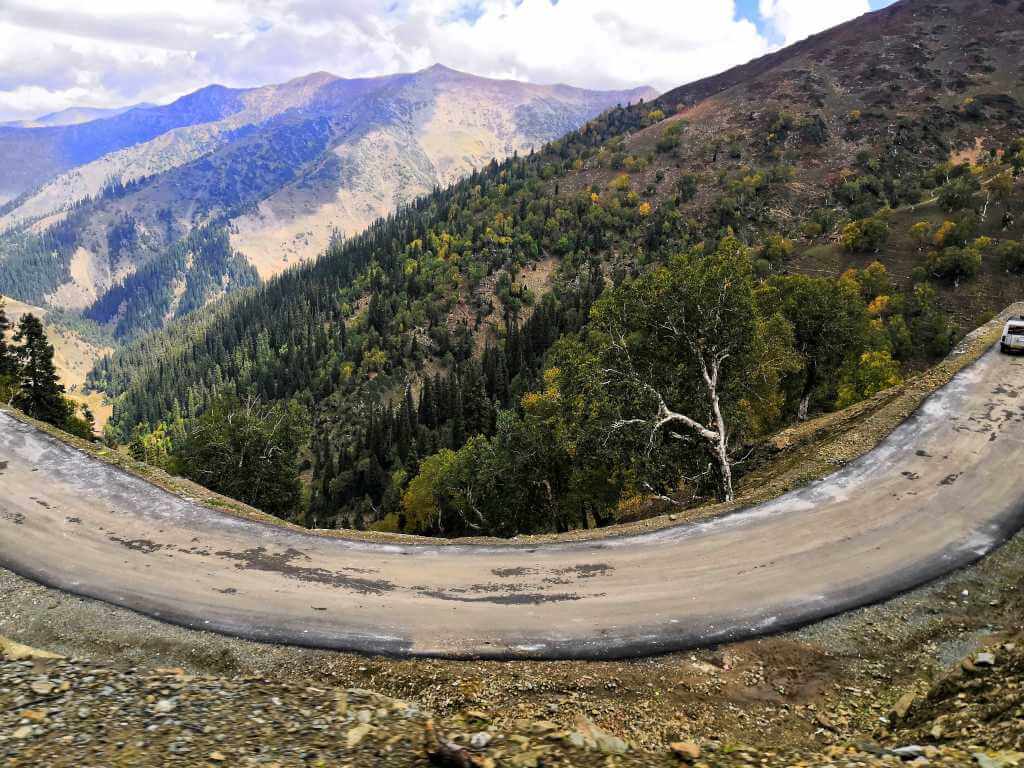


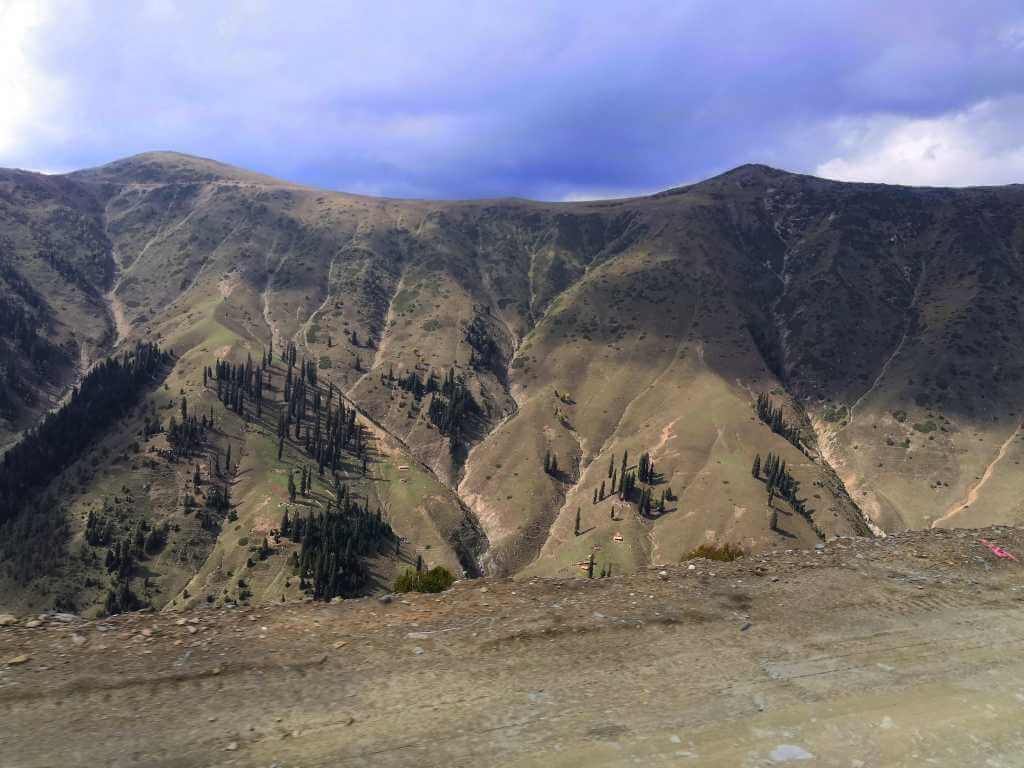



your guide to Gurez Valley Tour / FAQs
Gurez Valley is located in the northernmost region of Jammu and Kashmir. Gurez is a Town and Tehsil in Bandipore or Bandipora District of Jammu & Kashmir. Gurez Valley’s Dawar town, which is the central township in the region, is approximately 125 kilometres from Srinagar and about 85 kilometres from Bandipora. The easiest way to get there is by road. The journey from Srinagar takes around 6-7 hours, but the scenic views along the way make it well worth it. Alternatively, there are helicopter services that operate from Srinagar to Dawar but the service may not be regular. There are no local cabs from Srinagar to Gurez directly. You have to book a private cab from Srinagar to Dawar or do a local break journey on public share-taxis from Srinagar to Bandipora and then onwards to Dawar. Note that the public shared taxis to Gurez do not have any fixed times and hit the road only when full, mainly catering to the locals. While private cabs from Srinagar will take 6-7 hrs by road, local share taxis on a break journey may take 8-10 hrs.
The journey from Srinagar to Gurez in North Kashmir takes approximately 6-7 hours by car, covering a total distance of around 125 kilometres via Bandipora. The road conditions have now significantly improved compared to the earlier times. Along the way, travellers will encounter the Razdan Pass situated at an elevation of about 11600 ft. This pass is renowned for its breathtaking panoramic vistas. The road connecting Srinagar to Gurez is now a well-kept highway but includes some sections which are not in the best shape, especially the road down from the pass. Overall, the roads are in decent condition and the journey is more comfortable in Innovas than in Sumos or Boleros. It is important to note that the road remains closed during winter due to heavy snowfall at the pass.
Srinagar city is well connected to all the major cities in India and can be reached by air, train or road. The most convenient way to reach Srinagar is via flight. Sheikh Ul-Alam International Airport in Srinagar (Code: SXR) is around 15 Kms away from the city centre. Srinagar Airport has regular flights from Delhi, Mumbai, Bengaluru, Kolkata, Leh, Chandigarh and other cities.
The nearest railway station is Jammu Tawi Railway Station which is at a distance of 250 kilometers. One can hire a taxi and take a road trip to Srinagar from Jammu Tawi Railway Station. Jammu railway station is well connected to the Indian railways network to all major cities in India by rail. Direct train services are available from Delhi, Chennai, Bangalore and Trivandrum. By train one has to reach Jammu and then drive to Srinagar on road, which takes around 7-8 hours depending on road conscious and traffic. The upcoming new train stations and the extension of the railway network into Kashmir including the building of one of the highest rail bridges in the world will enable direct connectivity via trains without any need of road travel.
Despite being extremely close to the Line of Control, North Kashmir’s Gurez Valley is one of the most peaceful corners of Kashmir. The area is absolutely safe and secure for tourists. Starting from the road journey from Srinagar to exploring deep inside the valley, all areas are heavily guarded by the Indian Army and paramilitary forces. Due to its proximity to the LoC, the region was off-limits for travellers and tourists for many years due to imposition of restrictions by the government. Now that the region has fully opened up, more and more travellers are visiting to experience this hitherto hidden paradise.
Dawar is the central township of Gurez Valley and has the presence of a huge Army brigade in the town. There are multiple army camps and posts all around the region and some of the inner areas require proper permissions from the Army authorities. Depending on the day’s orders, they may prohibit visiting certain areas while other main areas will be free to go. The Army stationed here is on very good terms with the local population, employing them in various works plus providing much-needed assistance with medical and other emergencies, especially in the harsh winter months. The locals are hospitable and friendly and very welcoming to all visitors.This new wave of tourism not only has boosted the local economy, providing a good source of employment to local guides, tour operators, porters and other service providers but has also offered discerning travellers, cultural explorers and offbeat storytellers an awesome chance to experience this unexplored wonderland.
Overall, therefore Gurez valley is perfectly safe for all visitors. Having said this, like any other remote region in the Himalayas, it’s always advisable to follow any local travel advisories issued by the government, maintain basic safety precautions, and carry Govt. ID cards everywhere. When travelling to any new place anywhere in the country, it’s essential to stay updated on the local security situation before planning your visit. You can reach out to us to know the latest news and updates about Gurez Valley or any other areas in Kashmir region.
Indian nationals do not require any permit to visit Gurez Valley. Accessibility to Gurez Valley has improved dramatically in recent times and you can easily visit Gurez Valley without any prior permits or mandatory registrations before your trip. You will only need to carry your Aadhaar Card and present it at the Army check posts on the way from Srinagar to Gurez. In these posts, the duty officers will input your entry details, check your Aadhaar ID and register your information. It’s usually a quick process and most of the time, your driver or tour guide will take care of this.
Indian nationals only need to carry their originial Aadhaar Card and present it at the Army check posts when requested.
While Gurez is generally accessible by road between the months of May to November, the best time to visit Gurez Valley on a leisure tour is May-June and September-October. July and August are usually quite rainy months but this is when the valley is also at its greenest, filled with lush landscapes all around. During these periods, the weather is generally pleasant and temperatures range from 5°C to 25°C which may change due to local weather events and conditions. The nights can get cooler and it definitely feels colder when it rains. It’s advisable to pack some good warm clothing, particularly for the evenings and the higher altitudes.
For trekkers and adventure enthusiasts who opt for the Gurez Valley Trek or the Patalwan Lakes Trek, the weather conditions can be more extreme. The best time to do the Gurez Valley Trek is between the months of June to August. It has a short trekking window and June is usually the ideal time for a less rainy trek. The daytime temperatures on the trek range from 10-15 degrees Celsius while at nighttime, the mercury levels may drop to sub-zero temperatures.
Gurez Valley is not accessible for visitors throughout the year due to heavy snowfall on the Razdan Pass and harsh weather conditions during the winter months. The region is usually open for visitors from May to October when the roads are clear and weather conditions are favourable. The road clearances depend on the snowfall and the timings vary from year to year.
Due to its remoteness, the lesser-known region of Gurez does not have many accommodation options to choose from. Unlike how you would find in a typical commercialised tourist destination, there are only a few good accommodation options available in Gurez Valley that include local guesthouses, small hotels, and local homestays that cater to visitors. There is also a guest house run by the Jammu and Kashmir’s tourism department(JKTDC) that has been maintained decently. There are no luxury stays, star hotels or resorts yet in Gurez Valley. In most of the here, the services and amenities provided are basic but comfortable. We would always recommend choosing your stay hosted by the locals. This not only supports locals in their tourism endeavour but also makes your experience more authentic and memorable. It’s also always advisable to make reservations in advance, especially during the summer season to ensure availability.
In Gurez, Mobile Networks and internet connectivity are available in the main towns and villages of the region. BSNL network has been present here since long albeit intermittently. Recently Jio has arrived ensuring much better connectivity in this isolated region. As of now, only the Jio and BSNL mobile networks are present in Gurez Valley and the internet also works decently. Depending on your accommodation, wifi may also be available. However, in some of the areas in the region, the signal coverage can be sporadic or almost non-existent. When venturing into some of the interior areas deeper into the valley, the mobile signals may be quite limited as these places still remain cutoff from any kind of network connectivity. Therefore it’s important to be prepared for the possibility of no phone network or internet connectivity in some of the places visited. While you may encounter limited or no phone network and internet in some places during your visit, the experience provides you an excellent opportunity to disconnect from technology and immerse yourself in the natural beauty of the surroundings.
When visiting Jammu and Kashmir, it is important to note that prepaid mobile connections issued outside the territory are not functional due to security reasons. Only Postpaid connections and locally issued Prepaid sims will work. All postpaid connections of major network operators will have good reception and data connectivity in most destinations of the valley. Airtel, Jio, Vodafone and BSNL – all provide good connectivity and internet data networks in the main areas of the valley with BSNL having the widest coverage and Airtel having the strongest connectivity. Recently, Jio has penetrated well and is now offering great connectivity to even some very remote areas of the region. Srinagar city has good mobile connectivity for all major mobile network operators such as Airtel, Jio, Vodafone Idea, and BSNL providing coverage. Wi-Fi is also available in many hotels, cafes, and restaurants. However, please note connectivity in some of the remote and offbeat areas or during certain weather conditions may be intermittent or even non-existent.
Although there is electricity coverage in almost all parts of the valley, the supply can be irregular and limited. In Dawar town, for example, the electricity is supplied in a limited manner for a certain period of time in the day. Most accommodations in Gurez Valley nowadays have their own generator and electricity supply mechanisms. It is always recommended for such remote areas that you bring battery power banks in order to charge all your cameras, phones or other electronic items.
The Dard-Shin or the Shina people are an ethnic group residing in Gurez Valley. In India, They are primarily concentrated in this region and are considered the indigenous inhabitants of Gurez Valley. The Shina people have a rich cultural heritage that reflects their close connections with the people from Gilgit Baltistan on the other side of the border. The Shina is their native language, which belongs to the Dardic language family within the Indo-Aryan linguistic branch. It is the primary language spoken by the Shina people in their day-to-day interactions. However, many people in the main areas of Gurez also understand and speak Kashmiri and Urdu. The locals have their own unique customs, traditions, social structures, and artistic expressions that contribute to the cultural fabric of the region. In terms of livelihood, the locals are traditionally engaged in agriculture, animal husbandry, and more recently tourism. They have a deep knowledge of the local environment, enabling them to sustain themselves through farming and herding practices suited to the mountainous terrain.
The Shina people take pride in their cultural identity and try to actively preserve their traditions. Their traditional attire, consisting of embroidered dresses, headscarves, and shawls, is an important part of their cultural expression. The Shina people’s language, music, and dance forms are integral to their cultural heritage. They all have contributed to the overall diversity and richness of the cultural landscape of Gurez Valley. All visitors to Gurez Valley are therefore requested to follow the tenets of responsible tourism when visiting such locales. Travellers are advised to always respect local customs, dress modestly, and seek permission before photographing locals.
Since Gurez valley is a sensitive border zone located close to the LoC, the entry criteria has been made more strict for foreigners. As a foreigner, you have to take special permissions from the DC office in Bandipora. These permits are not guaranteed and may get denied. Therefore it is crucial to have a few buffer days if you plan to visit Gurez as a foreign national. Visitors with Overseas Citizen of India (OCI) cards are allowed with relatively lesser restrictions provided they inform the DC office on their travel plans. If you’re an OCI card holder or a foreign national with a foreign passport, you can reach out to us and we will check the currently ongoing restrictions to help you with your Gurez Valley Trip.
Yes there are some trekking options in Gurez Valley that visitors may consider. From short day hikes to multi-day treks, Gurez can be explored in different ways. However, many trails are not allowed due to security issues and multi-day camping treks require permission. You can do a day hike from Dawar to Habba Khatoon peak and its underground mountain spring, provided there are no restrictions by local army check-posts. Before you start hiking, it is best to check with your trip operator or local guide to Gurez Valley. One of the permitted multi-day camping treks in Gurez Valley is the Patalwan Lakes Trek or what we call the Gurez Valley Trek. The beautiful trail is extremely pristine and covers magnificent mountain terrain along with forests, meadows as well as high altitude alpine lakes that can be reached on foot. The Patalwan Lakes Trek has a short trekking window and can be done between the months June and August.
Dawar, the main township of Gurez region lies at an altitude of 7800 ft while the average altitude of its villages stands at about 8000 ft above mean sea level. On the Patalwan Lakes Trek, the elevation profile is different. Trekkers are able to reach up to 12795 feet on this high altitude trail when they reach the second Patalwan lake.
TRAVEL REVIEWS AND TESTIMONIALS


















A personalized itinerary can be crafted based on your group’s interests, expectations, and preferred dates and time duration. For tailoring a suitable Gurez Valley leisure tour experience just for you, please Call/Whatsapp on +91 8951064013 or mail us at contact@ekaxp.in

